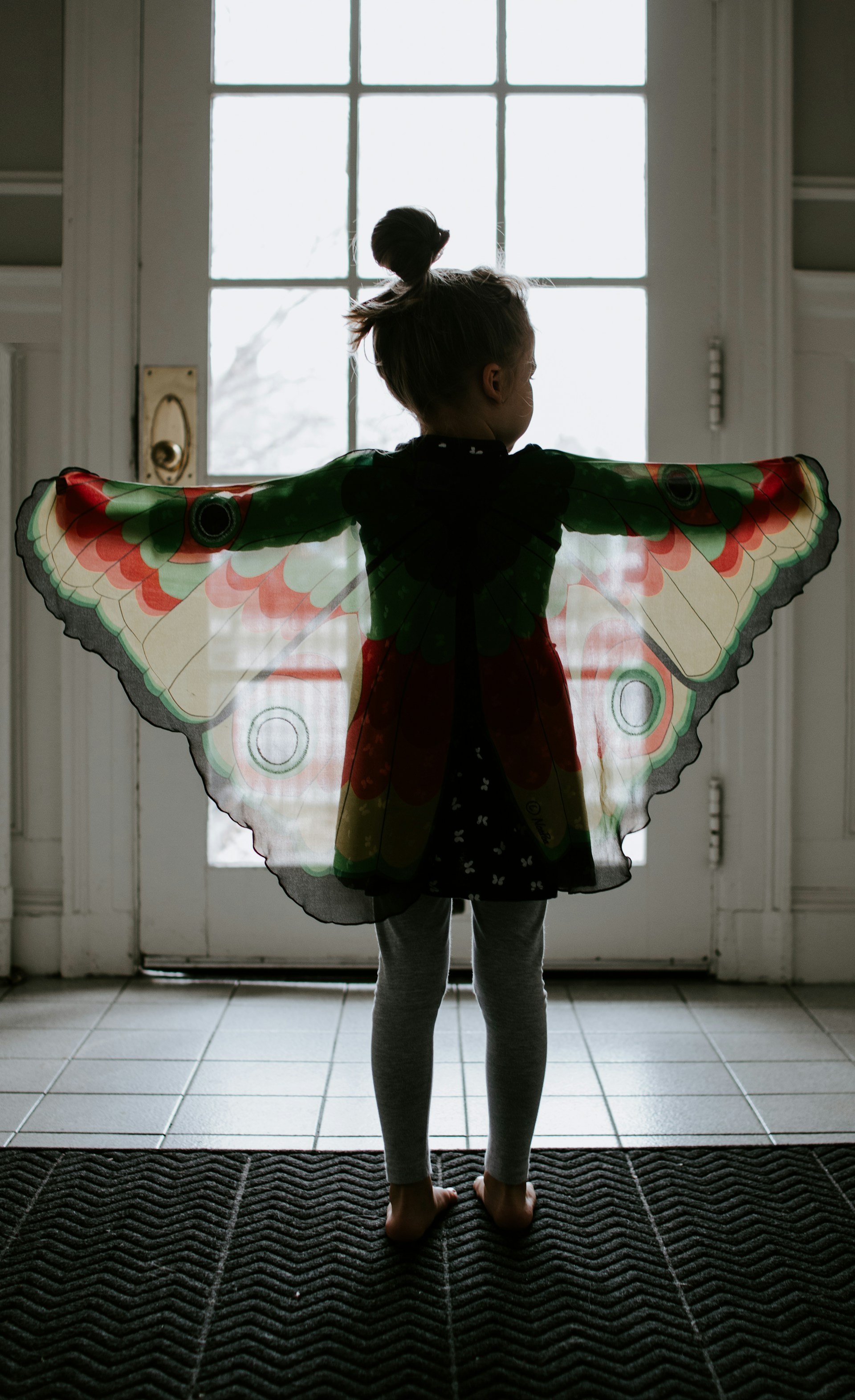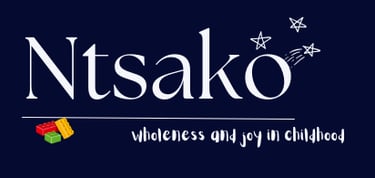
Imagination, Creativity, and Development
4.3 Better understanding imagination and creativity and how they aid in children's development
ISSUE 4
VJ Tlakula
10/3/20256 min read


Imagination and Creativity in Development
Imagination and creativity are two intertwined concepts. Out of what we imagine, we are able to create. Like play, these are often done spontaneously, simply because they are enjoyable. Again, like play, there are so many hidden benefits to imagination and creativity. They may not seem to be practical to survival on the surface, but when we really think about it, and cast our minds back to the world without play, imagination and creativity I discussed in Part 1, we see how vital they are.
Where I spoke about play as one way that the child's mind is displayed to us, creativity and imagination are another way that it can be displayed as much of imagination and creativity are influenced by memories and feelings. There is often a reference point that children or people imagine or create from. It is a complex topic, and we cannot fully cover it in this piece (we don’t even fully understand it yet!), but, like all our other pieces, I hope to provide a basic introduction.
Imagination and creativity, first and foremost, are the sign of an active mind and help to keep the mind active.
What is imagination?
Imagination happens primarily in the mind. It is, by nature, the creativity of the mind. The ability or act of forming new ideas, images, or concepts of external objects not currently present to the senses or even which have never been experienced before.
Imagination is also more purposeful than we’d ordinarily think as it can help with problem solving, creativity, and processing events or concepts which the mind struggles to process. Imagination is, thus, the source of new ideas that can affect how we experience the world.
In children, the ability to imagine really comes in when they have conquered the sensorimotor stage and are in the concrete operational stage. Here, they have the concept that things continue to exist even when they cannot immediately see them or all of them. They are able to hold a mental image of something that is not immediately in front of them.
This is why preschool-aged children, who are also really learning to play in new, more social ways, also tend to have more wild imaginations than any other stage. This is all happening within or just after their first 1001 days where the world is full of possibilities to them and their brains are learning and growing at their most rapid rate of their lives. This growth, together with not fully grasping the limits of the world creates a recipe for strong imagination.
What is creativity?
Creativity, being so closely tied to imagination, often emerges out of imagination. Creativity turns what we imagine into some form of reality. It brings what is in the mind into the physical world. Creativity is making something new. It may not be new to the world, but it is something new to the one who creates it. It is the consequence of multiple cognitive processes involved in thinking and manipulating physical objects to ‘bring one’s vision to life’ in some way. Creativity is even tied to usefulness, like finding a way of filling in a gap to solve a problem.
Creativity emerges when children are discovering their place in the world. They are discovering that their actions can have an impact on their surroundings and are deliberately testing that ability out, often getting pleasure from their ability to influence the world and exercise their will. Creativity can be a way of experimenting with the world around them and drives children to explore and engage with the world around them. It can be a way of combining what one has imagined with the reality of the world to further discover what is possible.
Creativity that may look useless (like the scribbles a child makes as a form of art) actually has a lot of use in their skill development and can represent all sorts of unseen breakthroughs happening in their brains that they are not even aware of.
Brain development
Imagination and creativity are a true feat of cognition. One is able to envision things which do not yet exist and find a way to bring them into existence. Now, it doesn’t mean that children will always imagine things that are possible or exist, but the value of imagination and creativity is sometimes seen more in its process of reaching the end rather than the end it creates.
For example, a child might try to build a flying car. This is not possible for them, but in their process of trying to do this, they are discovering for themselves how things work, what works or doesn’t, and why. Failure in this can be discouraging, but even that is vital to development. The skills developed in the process of creating and imagining are crucial to other aspects of life. Therefore, imagination and creativity facilitate learning and cognitive development, as well as social and emotional development.
Some other areas where development is aided by imagination and creativity are:
Theory of Mind: There is something called theory of mind. This is one of the foundations in the development of empathy and social skills in young children. Theory of mind is the ability to understand that not everybody thinks the way you do and being able to place yourself in someone else’s mind, imagining what they may be thinking or feeling.
This is something that develops in children as they begin to learn that the world does not revolve around them and that the success of their relationships often depends on how they are able to think of others. The foundation of theory of mind, I believe, is imagination. Imagination requires you to extend beyond yourself and what you immediately know and understand. We see this in role playing where children imagine how other people that are not themselves would behave and why.
Critical thinking and problem-solving: Imagination and creativity are good for the development of critical thinking skills. Children are able to imagine worlds as they could be but also test out their theories. Therefore, imagination and creativity can help with the development of complex thought. Think about how children are always creating, they find that one thing may not work while another does work. Creativity and imagination can help children to recognise patterns between seemingly unrelated things and find ways to connect them.
Remember how I stated that imagination and creativity often start from a reference point of something known or experienced to create something new which may not be known exactly? That is critical thinking and problem solving. Say, for example a child wants to draw a picture of a flying creature never before seen, they may add wings to their picture based on their knowledge that flying things tend to have wings.
Similarly, if they need to figure out how to balance something (perhaps building a tower), in their trial-and-error, they may learn about concepts of weight and balance and the like by realising that they cannot put a large brick on top of a smaller brick, but need to put the smaller brick on top of the larger one to make their tower stand.
Less concrete thinking: In the learning Issue, we discussed how when children are younger, they are only able to think concretely. They can only think of the here and now. Imagination and creativity allow children to hold ideas and concepts about things that are not immediately in front of them, or even use their understanding of how the world works to create new things that they have not seen.
Self-efficacy and identity: Imagination and creativity are part of the expression of who we are, and help children to develop confidence in who they are and what they might be able to achieve. By being encouraged in imagining and creativity, children learn that they have value to contribute, even if they are not always right. They develop an understanding of their interests and abilities and the exploration and experimentation with the world encourages them not to be afraid of the world.
Focus, self-control and resilience: With the process of creativity comes the potential for failure. Trying to create something requires a large amount of focus and consistency. Whether it is drawing a picture or singing a song.
Being able to hold onto your image of what something is meant to look or be like even when you cannot see it immediately is supported in imagination and creativity. Children may learn that things they want to achieve take time. Even in boredom children will naturally imagine or create.
The Takeaway
As we can see, imagination and creativity are extremely purposeful and valuable. The next article discusses a bit more about these things outside of biological development, but looking to their value for the child's world and the world at large.
Share your Comments Below!
Please feel free to reach out with any comments, questions, and child-related stories
Celebrating childhood and development
© Ntsako Wholeness and Joy in Childhood 2025. All rights reserved.
Copyright Vutlhari Joy Tlakula 2025. All Rights Reserved.


